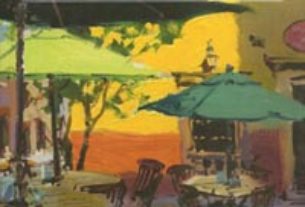Here’s a story that takes in a complete life, from childhood well into adulthood, and from rags to riches. It’s a story that is of interest to we residents in the Lake Chapala area as it starts out in Ajijic and covers a fair number of years there – or should I say here.
On page one we encounter ten-year-old Francisco Obregón, a homeless barefoot orphan outside the Old Posada on the Ajijic waterfront. It’s 1940 and Francisco is hustling for odd jobs and tips. It’s the only way he can manage to survive. For a few pesos he persuades a visiting gringo, Adrian Grant, to pay him to keep an eye on his car while Grant and his wife dine at the Old Posada restaurant. Grant is a Hollywood screenwriter who is checking out Ajijic as a place to come and live for a few months while he writes a novel he has in mind.
Francisco takes on the job of washing Grant’s car and the two of them chat. Grant takes a liking to the youngster and hires him to guide him and his wife around the lakeside area to look for a house to rent. In the ensuing days the pair take pity on the lad. Grant’s wife buys Francisco some clothes, including his first ever pair of shoes. Francisco has a talent for art and repays them with an excellent charcoal sketch of Grant.
All of this activity finally results in the Grants visiting a lawyer in Chapala and setting up a trust fund for the boy that will allow him to get an education and also develop his artistic talent. Adrian Grant is deeply impressed with Francisco’s resourcefulness and his talent and feels it’s the least he can do to give the boy a boost in life.
Francisco is left in the hands of the lawyer, Jorge Santana Alcazar, who acts on Adrian’s behalf. The boy is given an allowance and a room in Santana Alcazar’s bodega. He is also provided with food and clothing and is generally very well looked after. He is also placed under the tutelage of a celebrated local painter, Ricardo Vasquez. Thus his artistic talent flourishes.
In this same period Francisco falls in love with Juanita, a fellow student at school. And in 1953 they get married. A few years later they decide that they might do better moving to the U.S. Francisco has been doing odd jobs – waiter, night watchman, etc. and Juanita works as a housemaid. It’s obvious, however, they are not going to prosper staying in Ajijic. Adrian Grant acquires entry visas for them and they move to Los Angeles. Francisco is now 25 years old.
The new life begins in promising fashion. The couple rent an apartment in their L.A. barrio, Echo Park, where their landlord hires Francisco to paint a mural on the side of the building. An art dealer sees it and makes a deal which results in a few of Francisco’s paintings finally finding customers.
Things turn sour however when Juanita becomes pregnant and both she and the baby die in childbirth. It’s the lowest point in Francisco’s life. His work takes on a melancholy cast and no longer sells the way it did.
Other things happen to Francisco – none of them good. He runs afoul of Los Angeles County zoning inspectors. At one point he is arrested and goes to night court. Also he is flat broke because his paintings don’t sell and he can’t or won’t change his style. Things actually get bad enough that he seriously contemplates suicide and even makes a few preliminary moves in that direction.
For this reader Francisco wallows far too much in self-pity. His depression goes on for 20 years which is surely overdoing the mourning process. He’s so attractive in childhood but none of those positive qualities seem to carry on into this later phase of his life. I can’t see why a person with genuine talent, like Francisco, can’t turn his life around. But that’s just my personal viewpoint. All is not lost, however. Some of the people who have played a part in those 20 years do finally have some effect on him and, in the climax of the story, they come together and get him started on some sort of recovery process.
I see that the book actually started out as a movie, with the same title. It premiered in Texas at the San Antonio Film Festival where it earned a standing ovation. It later played in the Kennedy Center in Washington and was also eventually selected as an “Official U.S. Entry” at the prestigious Deauville Film Festival in France. Oddly enough, however, I haven’t been able to find the movie. I don’t even see a mention of it on the various movie review websites on the internet. It’s a pity. It would be interesting to see the differences between the two approaches to Francisco’s story.
However, despite the film’s critical and financial success, its writer, director and co-producer, Alejandro Grattan, was left with an empty feeling. The script had barely touched the surface of the story Grattan wanted to tell. He just couldn’t include all the material he had about Francisco in the movie. Thus, more than 20 years later, it became the subject of his third novel.
In my humble O: As you can see, I have mixed feelings on this one.
Only Once in a Lifetime
By Alejandro Grattan
We Publish.com.
2002
Paperback
Available from Amazon Books: Here


